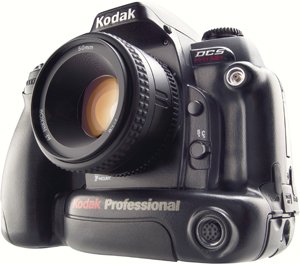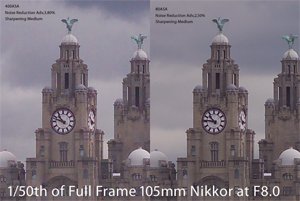articles/Cameras/kodakdcs-page1
KODAK DCSPro14n Big Chips for High Rollers - part 1 of 1 2 3 4 5
by Mike McNamee Published 01/04/2005

THE Kodak DCSPro 14n has long time in arriving. It was announced in September 2002, officially launched in December 2002 and is just starting to populate the dealers' shelves as this review is being written (July 2003). It has, by any standards, been a slightly difficult birth (think forceps delivery!) and the premature infant is still being continually refined through a succession of firmware upgrades. Professional Imagemaker is some way down the list of recipients and so we have the advantage of chewing over other peoples reviews and also benefiting from the ongoing upgrades. Some of the material already been written cannot be described as totally complimentary so we were very curious to see just how the new baby performed.
Our tests consisted of the usual techie stuff but we were also fortunate to engage the services of Martin Sellars of Martin Sellars Photography who generously provided both his studio and expertise and also our gorgeous model, Claire. Your Editor has received complaints about his ugly mug appearing behind a succession of Macbeth Charts, we hope you like the new version better! Of some significance is the fact that Martin has 27 years of colour printing experience to call upon, as well as a very critical eye for colour balance and very demanding standards. His ability to outguess the spectrophotometer during the tests became a bit of a talking point.
There is little point is listing the specification of the DCS 14n - that can easily be accomplished by a visit to the Internet (try www.dpreview.com for starters). We were more concerned with how the camera handled in and out of the studio and, in particular, how good it was at reproducing skin tones.

There is an increase in oise when the ISO 400 setting is used. Although it looks a ittle ugly at high magnifications it is barely vidible in normal sized
The feature which makes the DCS 14n stand out from the crowd is the full-sized 35mm CMOS chip. It is not unique in this regard as both the new Contax and the Canon EOS1DS have similar specifications (albeit with much bigger price tags). The ability to use the entire circle of the lens coverage is a benefit which should not be treated lightly, it was a joy to bolt on a 105mm Nikkor and know exactly where to stand in the studio for a head and shoulders shot! There are issues however with Nikkor lens compatibility and those with an extensive inventory of older lenses should check the compatibility as part of their investment decision-making. Architectural photographers who have been itching to get back their wide angle coverage should note that the Perspective Control Nikkors have some issues. Also some of the bigger telephoto lenses and all non AI Nikkors are incompatible. One of the factors in deciding to invest in the more expensive DCS 14n is this ability to retain a current lens inventory and thus save money on less used types of lens.
You are currently on page 1
- KODAK DCSPro14n Big Chips for High
Rollers page 1
- KODAK DCSPro14n Big Chips for High
Rollers page 2
- KODAK DCSPro14n Big Chips for High
Rollers page 3
- KODAK DCSPro14n Big Chips for High
Rollers page 4
- KODAK DCSPro14n Big Chips for High
Rollers page 5
1st Published 01/04/2005
last update 09/12/2022 14:55:34
More Cameras Articles
There are 20 days to get ready for The Society of Photographers Convention and Trade Show at The Novotel London West, Hammersmith ...
which starts on Wednesday 14th January 2026





